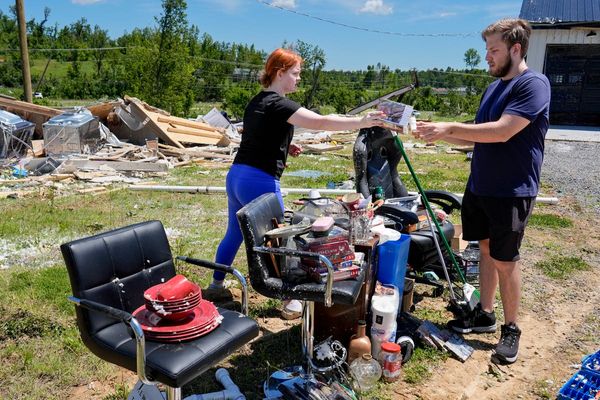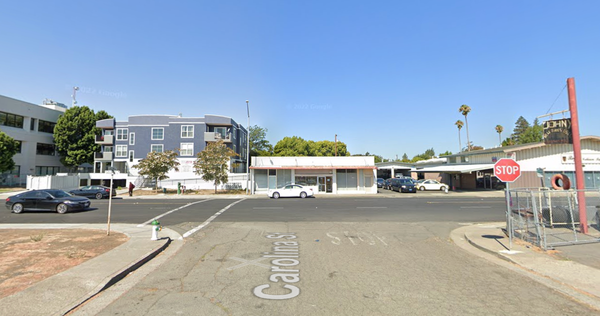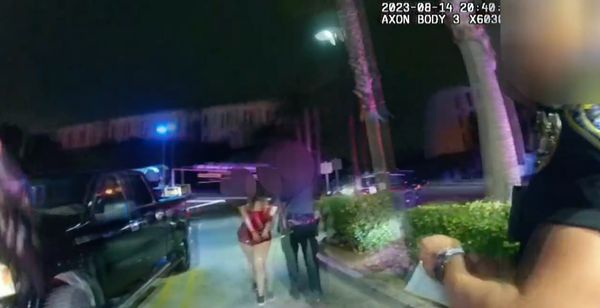Grainy footage of the Manhattan skyline, of the subway trundling into a station. Of Blondie, Lou Reed, Andy Warhol. Of LCD Soundsystem's James Murphy straightening his tie before going on stage; of a baby-faced Julian Casablancas, as The Strokes' singer catches the camera's eye and grins.
The immersive rock doc Meet Me in the Bathroom, named for one of the propulsive tracks off the latter band's second album, kicks off with a (rather reheated) montage of New York City as grungy melting pot slash historic artist's mecca.
Filmmakers Dylan Southern and Will Lovelace (Shut Up and Play the Hits) use their opening gambit to draw a direct line from the punk scene of the 1970s and 80s, as defined on the stages of Max's Kansas City and CBGB's, to the indie rock outpouring of the early 00s. It was an explosion set off by The Strokes, delinquent private school boys who found themselves in possession of a sonic firework, as aided and abetted by Murphy, with LCD Soundsystem and his DFA record label, plus the Yeah Yeah Yeahs, Interpol, and a handful of other prodigious weirdos.
In an NYC newly scrubbed down by Giuliani and pumped up by dotcom bubble dollars, where rap rock ruled the radio waves, Casablancas and his bandmates turned to the music of that particularly fecund and filthy bygone era – The Velvet Underground in particular – for the inspiration they had been lacking.
It's therefore fitting that the book from which Southern and Lovelace's film was painstakingly adapted – Lizzy Goodman's densely populated oral history of New York's post-9/11 music scene, published in 2017 – was conceived as something of a spiritual sequel to one of east coast punk's seminal texts: Please Kill Me, Legs McNeil and Gillian McCain's own scintillating, warts-and-all oral history, from 1996.
The filmmakers, for their part, bring to bear a feel for the material garnered in the making of Shut Up and Play the Hits, the LCD Soundsystem concert film that captured the ecstasy and the subsequent comedown of what was then to be the band's final performance, at Madison Square Garden in 2011. Where Southern and Lovelace had previously set out to capture something as it unfolded, now they turn to the archive, seeking to re-create the alchemy of the scene in its skinny jeans-clad heyday.
"Is anybody going to care though?" Goodman recalls Ryan Gentles, The Strokes' former manager, saying when she first told him about her book deal. Any of the enraptured 18,000 LCD Soundsystem fans at that show or indeed any elder millennial could've reassured him: Of course. Those of us who naively spoke-sang along with LCD Soundsystem's hymn to hipster anxiety Losing My Edge ("The kids are coming up from behind") when it came out in 2002 are now old enough to understand just what Murphy, as a late-blooming frontman, was mourning.
Beyond the millennial nostalgia factor, however, the film offers a snapshot of a period shaped by a seismic rift in the consumption – and production – of pop culture, with the transition from analog to digital distribution. Not only did the emergence of Napster (and Limewire, and Kazaa) slash revenue across the industry, resulting in the tightening of purse strings, but it also created a way for people to converge over music that had nothing to do with geography. The internet complicated the very notion of a 'music scene' as something bound to a physical place.
Beyond the bands themselves, beyond the long-gone, semi-affordable version of New York in which no one had even dreamed of brunching in Williamsburg, Meet Me in the Bathroom (the book, the film) commemorates the feeling of a specifically localised phenomenon, supercharged by waves of international adulation but nursed on stoops and in backrooms over cheap beer and, inevitably, an array of harder substances.
Southern and Lovelace seek to conjure that in-the-moment feeling by confining themselves to archival footage, much of it erratically handheld and megapixel-muddy, the MiniDV aesthetic nostalgic in its obsolescence. The visuals are overlaid with the audio of contemporary interviews with a cornucopia of the key players – though necessarily a far smaller chorus than makes up the book.
In the condensation of an ungainly story, however, much of the ugliness, the pettiness, the ambiguities that come through so clearly in the book have been sheared away. If Goodman made a bible of sorts, then the film, with its stack of heart-jangling musical cues and bits of wistful ambient score, veers hagiographic – as did Shut Up and Play the Hits, to its mild detriment.
Arguably, that's the point of such documentaries – are these not proverbial 'rock gods'? – but sometimes Meet Me in the Bathroom starts to feel a little like idol worship; like the mythos in play is being oversold.
That might be the inevitable result of opening with glimpses of Lou Reed and Blondie, long-canonised figures of musical genius. For sure it has something to do with the ahistoricism of certain comments made, as when Karen O, who is otherwise probably the film's most beguiling narrator, speaks about there being "no template" for women on rock's frontline. Debbie Harry – or Courtney Love, who appears in the film but only as a subject of mockery – might disagree.
The sense of excessive reverence also likely has something to do with the fact that most of these bands are still around, and functioning as more or less bowdlerised versions of their leaner, meaner past selves. Talk about 'losing your edge': The resurrected version of LCD Soundsystem was recently seen playing to a sparse crowd at the Bored Ape NFT Festival. Julian Casablancas, meanwhile, is sending creepy-lame messages to girls on Instagram. (Karen O, thankfully, is still cool.)
LCD Soundsystem's 'final' concert over a decade ago was to the New York rock rebirth what Johnny Thunders's death, in 1991, was to the punk scene: a death knell, only staged as a bang rather than a heartsick whimper. On that night, at least, James Murphy knew that the magic hits harder when there is no encore.
Meet Me in the Bathroom is in cinemas from March 16.







